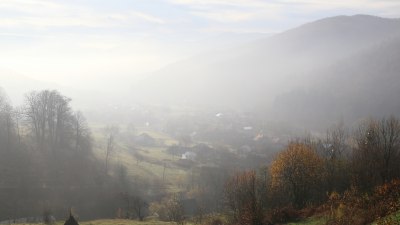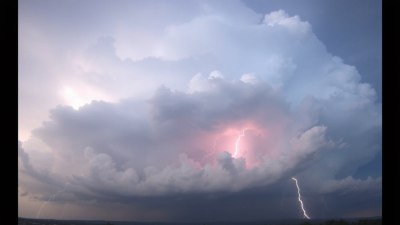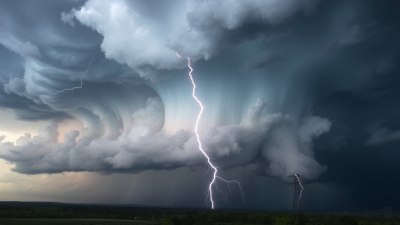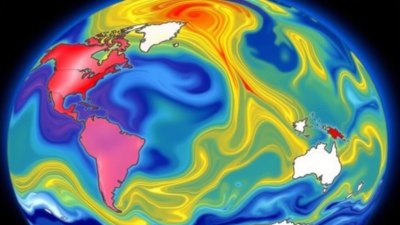What Makes Mornings Misty and Afternoons Clear
Explore the science behind misty mornings and clear afternoons, uncovering atmospheric phenomena and weather patterns.

Mornings often greet us with a veil of mist, while afternoons can be remarkably clear. This phenomenon is not just a simple play of light and shadow but involves a complex interplay of temperature, humidity, and atmospheric conditions. Understanding what causes mornings to be misty and afternoons to become clear requires delving into meteorological science.
Understanding Mist Formation
Mist is essentially a collection of tiny water droplets suspended in the air. It forms when water vapor condenses into liquid droplets under certain conditions, primarily temperature and humidity. The relative humidity must reach 100% for condensation to occur, leading to the formation of mist. This often happens in the early morning hours when temperatures are at their lowest and humidity is at its highest.
The Role of Temperature
Temperature plays a critical role in the formation of mist. During the night, the ground cools significantly, especially in areas with little vegetation or water bodies. This cooling causes the air near the ground to drop in temperature significantly, enabling it to hold less moisture. As a result, the moisture present in the air condenses and forms mist.
Humidity and Dew Point
Humidity is the amount of water vapor present in the air. In the morning, especially during the summer months, humidity levels can be relatively high, leading to fog and mist. The dew point, which is the temperature at which air becomes saturated with moisture, also plays an important role. When the temperature drops to or below the dew point during the night, mist begins to form.
Geographical Influences
The geographical setting also significantly influences morning mist. Areas near large bodies of water, like lakes or oceans, tend to experience more mist. This is because water from these bodies evaporates, adding moisture to the surrounding air. When temperatures drop overnight, the added moisture condenses, leading to the formation of fog or mist. Similarly, valleys and low-lying areas are prone to mist since cold air sinks and accumulates at lower elevations.
How Afternoons Become Clear
As the sun rises, the temperature begins to rise too. This increase in temperature has several effects that contribute to the clearing of any morning mist. First, warmer air can hold more moisture, which means that as temperatures rise, any mist that has formed begins to evaporate. The energy from the sun helps to heat the ground, which in turn warms the air above it, leading to the dissipation of mist by the late morning or early afternoon.
Solar Radiation's Impact
Solar radiation plays a crucial role in weather patterns. In the morning, sunlight penetrates the atmosphere and warms the ground and surrounding air. As the ground heats up, it warms the adjacent air, increasing its temperature and lowering the relative humidity. This process leads to the evaporation of mist and the clearing of the atmosphere. The amount of solar radiation received varies based on the season and geographical location, affecting how quickly mist dissipates and how clear the afternoons become.
Wind Factors
Wind also contributes to the clearing of misty conditions. On calm mornings, mist is more likely to form since there is little movement to disperse the water droplets. However, as the day progresses, even a light breeze can help mix the air and distribute moisture more evenly. This mixing facilitates evaporation and the dispersal of mist, leading to the clearer conditions typically observed in the afternoons.
The Cycle of Weather
The transition from a misty morning to a clear afternoon is a part of the daily weather cycle. This cycle is not just limited to a single day but is influenced by larger weather patterns and systems. High-pressure systems often promote clearer skies by inhibiting cloud formation. During the day, the sun can heat the ground sufficiently to create a significant temperature difference between the air layers, contributing to the development of stable atmospheric conditions that clear the mist.
Seasonal Variations
Different seasons also have a marked effect on the frequency and intensity of mist and clear afternoons. Spring and autumn are typically characterized by more humid conditions, leading to a higher likelihood of mist forming in the mornings. Conversely, summer days tend to be clearer, due to higher overall temperatures and lower relative humidity. Winter presents a different challenge; cold air can settle in and cause morning frost, which gives a different visual appearance to the landscape.
Climate Change and Its Effects
Climate change is having a profound impact on weather patterns, including the occurrence of mist and clear skies. Changes in temperature and humidity can alter local weather conditions, making certain areas more prone to morning mist. Understanding these shifts is crucial for predicting weather and preparing for various environmental impacts. Researchers are studying long-term data to identify trends in mist formation and how climate change could reshape these patterns in the coming decades.
The contrast between misty mornings and clear afternoons is a fascinating interplay of environmental factors. Understanding the dynamics of temperature, humidity, wind, and geographical features reveals the complexity of atmospheric science. As weather patterns continue to evolve, the study of these phenomena will enhance our understanding of the world around us and help us adapt to changing climates.











